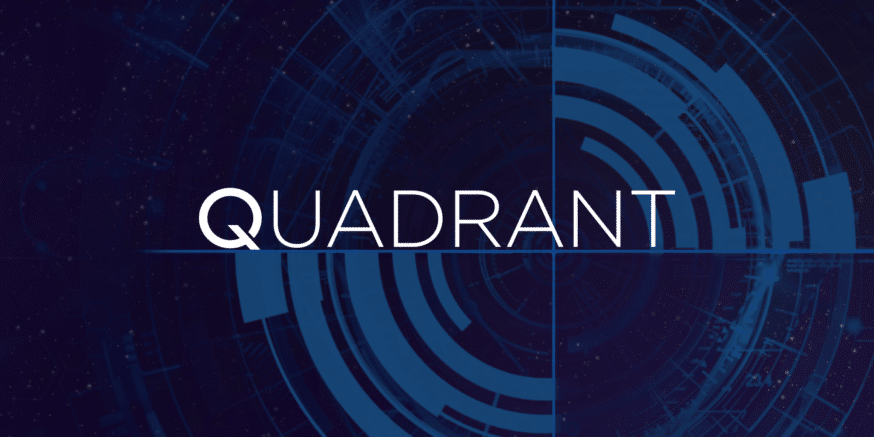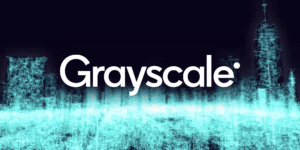- How does the Quadrant Protocol Work?
- QUAD and eQUAD Tokens
- Quadrant Protocol Team & Progress
- Final Thoughts
The Quadrant Protocol facilitates the creation and distribution of data-focused products and services. Simply put, it’s a marketplace for data sources to more efficiently sell information to data consumers. The team behind it believes that we’re on the cusp of a data-driven future and want to solve the numerous problems they already see occurring in the industry.
The Problems
Due to the high costs of gathering data for machine learning, smaller businesses are unable to compete with the behemoths (e.g., Google) on an Artificial Intelligence (AI) and Big Data fronts.
Even with the ability to purchase data, it’s difficult for businesses to validate the authenticity of what they receive. Data vendors, motivated by easy profits, commonly sell data from unethical sources or even fabricate stats to make a sale.
Additionally, many data feeds today rely on centralized systems that have the potential of crashing. Any disruption in a single data feed could be detrimental to the numerous companies that depend on it for day-to-day operations. Disruptions could occur due to anything from a power outage to the provider going bankrupt. These systems aren’t robust.
Finally, although data economies are relatively young, you can already see an unfair distribution of revenue brewing. Data sources, also known as Atomic Data Producers (ADPs), commonly receive the short end of the stick as vendors repackage and resell their data to capture the majority of the revenue. A one-time sale for a data source could mean several deals for the vendor they sell to.
All these issues cause an unsustainable adoption cycle similar in shape to the Gartner Hype Cycle (see below). The goal of the Quadrant protocol is to drop customers off in the Plateau of Productivity from the get-go.
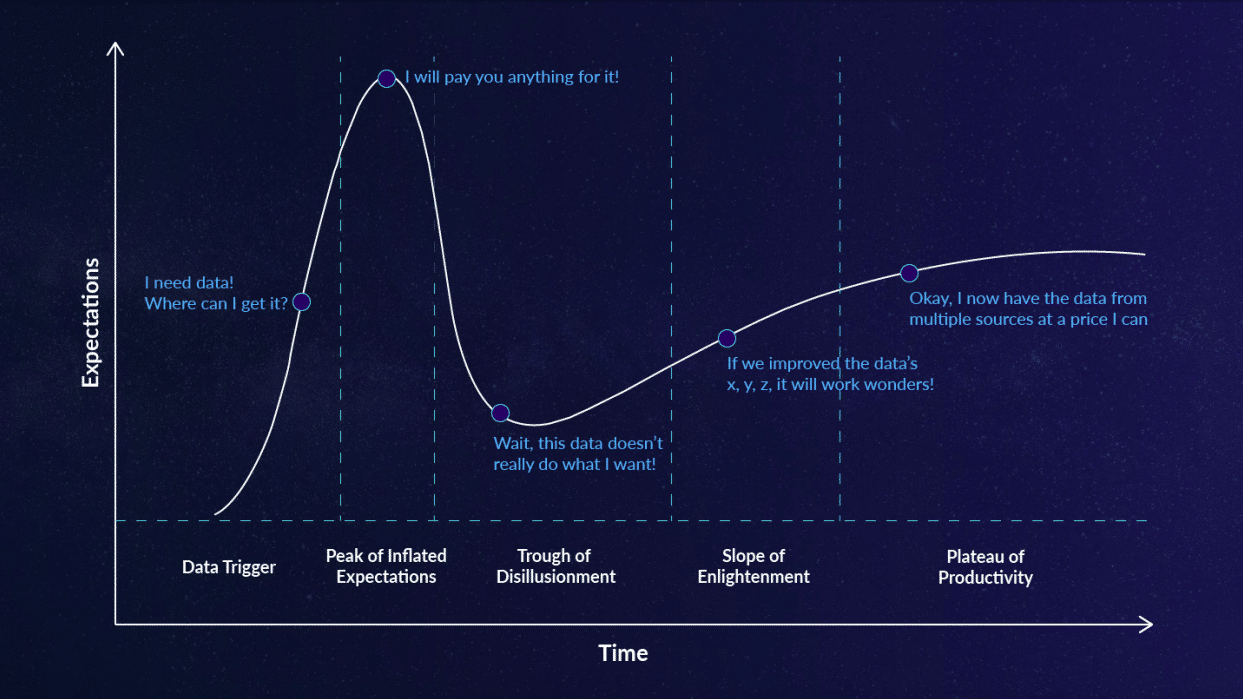
How does the Quadrant Protocol Work?
The Quadrant protocol consists of four types of entities (Warning: strong space theme):
- Nurseries are effectively ADPs that source data. The protocol refers to raw data as Stars that combine to form Constellations.
- Pioneers are data vendors that use Quadrant smart contracts to make Constellations out of Stars.
- Elons take those Constellations and connect them to produce data products and services.
- Guardians are the Quandrant protocol masternodes. They stamp, authenticate, and verify data in Constellations.
Now, let’s examine how each of these entities fits in some of the main features of the Quadrant protocol.
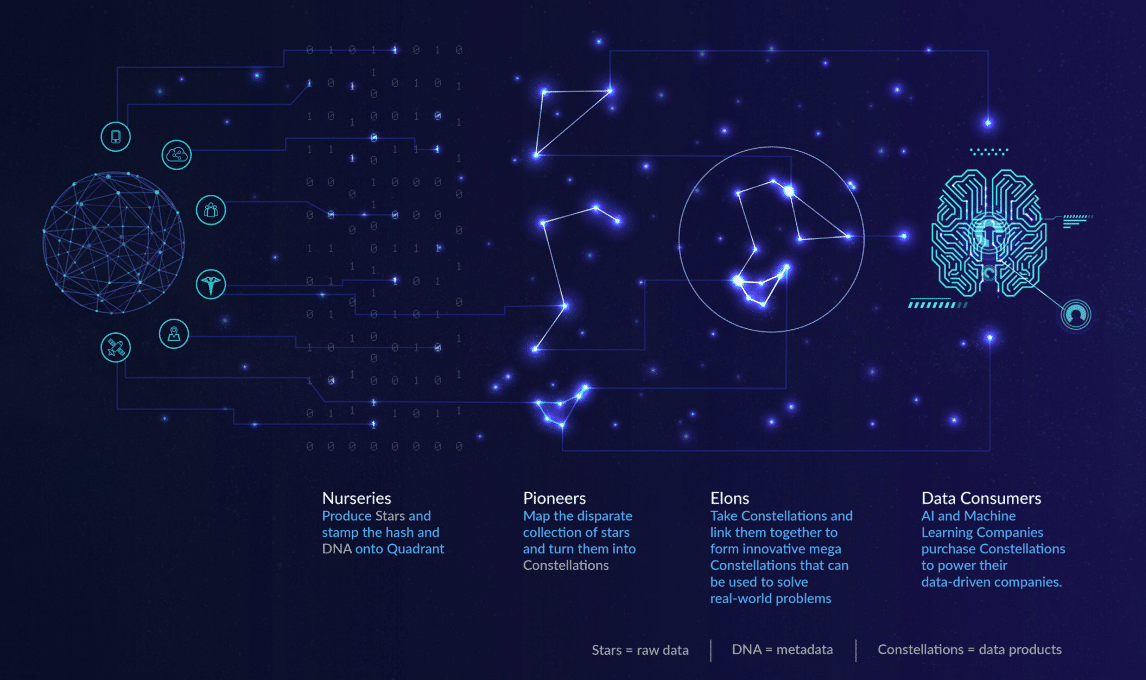
Proof of Data Authenticity and Provenance
Similar to blockchain improving provenance in art, the Quadrant protocol enables you to trace any piece of data back to its source.
Here’s how it works: Pioneers hash the data of their Constellations and push a DNA stamp of that data to Quadrant. The end consumer then hashes the information they receive to check that it matches what the Pioneer provided. If it matches, the consumer has Proof of Data Authenticity.
This provenance mechanism solves the issue of false data that we discussed previously.
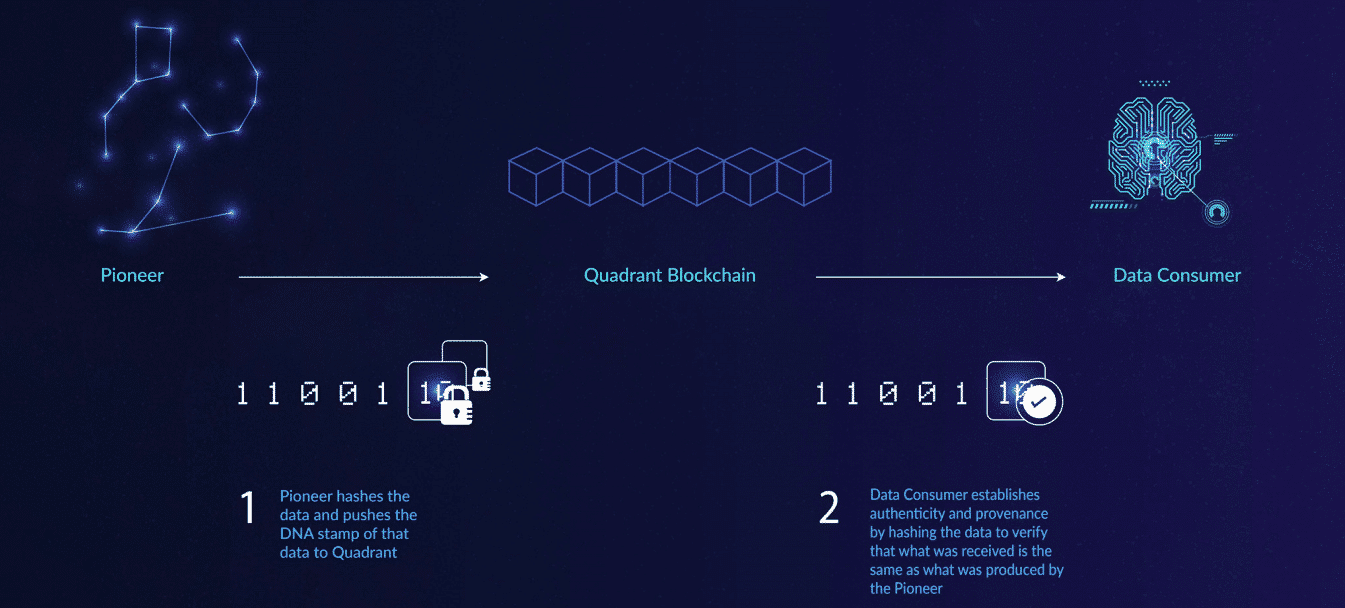
Constellations for Disparate Data Sources
Constellations are the bread and butter of the Quadrant protocol. By providing easy access to a suite of data, these clusters enable smaller businesses to compete with the big players.
The advantages are two-fold. First, data becomes more accessible as the competition among data sources drives prices down. Secondly, multiple, similar data sources make the feeds more robust. If a data source goes down for any reason, another one can take its place with limited downtime.
Fair Remuneration and Incentive Sharing
The Quadrant protocol improves on the current state of revenue distribution in the data industry by automating payments throughout the data pipeline. When an Elon purchases a Constellation from a Pioneer, smart contracts allocate the appropriate payment amount to the Nursery data providers. These providers receive payment in the form of QUAD tokens.
In the Quadrant ecosystem, automatic payments ensure that data sources are more fairly compensated than they otherwise would be.
QUAD and eQUAD Tokens
The Quadrant protocol technically has two tokens. However, the eQUAD tokens are just an ERC20 placeholder until the team launches their mainnet. After the launch, all eQUAD holders should convert their tokens to QUAD. For that reason, we’re going to only focus on QUAD.
QUAD is the currency on the Quadrant protocol. The most apparent use of QUAD is for payment between those selling data and the parties buying it. But it’s required for other protocol functions as well.
Elons must stake QUAD to access different data sets. Guardian nodes receive QUAD for verifying transactions and updating the blockchain. And Pioneers’ remuneration is in QUAD.
There’s a total supply of one billion QUAD. Of this supply, the team sold forty percent of the tokens to the public during the crowd sale.
Quadrant Protocol Team & Progress
CEO and Founder Mike Davie started the project in Q3 2017. Before working on the Quadrant protocol, Davie founded DataStreamX, an online marketplace for real-time data. DataStreamX is the first partner to use the Quadrant protocol.
The project also has the support of some notable advisors. Dorjee Sun (Santiment.net COO), Benedict Chan (BitGo CTO), and Pavel Bains (Bluzelle CEO) are all on the advisory board.
Since its 2017 beginnings, the project has released a testnet and began testing with some initial clients. This year, the team is planning on launching the mainnet, with Nursery micropayments and distributed Guardian nodes coming in 2019 and 2020, respectively.
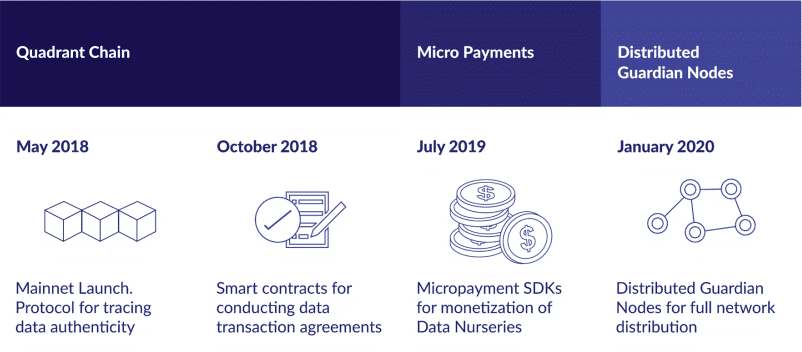
Competition
Data marketplaces are a crowded space for blockchain projects, but with a projected $200 billion market size by 2020, the pie is big enough to share.
That being said, there are older, and arguably more valuable, cryptocurrencies already addressing data issues. IOTA has an active marketplace for IoT sensor data. And Enigma is currently building out a data marketplace as well.
Even Amazon has a patent in place for a subscription-based data feed streaming platform. However, none of these projects has cornered the market just yet.
[thrive_leads id=’5219′]
Final Thoughts
The Quadrant protocol is working to level the playing field for data-driven businesses by providing a sustainable marketplace for all parties involved. Using the protocol, data sources (Nurseries) can monetize their data long after the initial sale, data vendors (Pioneers) receive a more reliable stream of data, and consumers (Elons) can trust the validity of the data they get.
Most importantly, though, the incentives structure of the protocol allows smaller businesses to access data streams that were previously unavailable. Opening up these streams should, in turn, help the entire data ecosystem to grow as more and more companies build products using the plethora of data at their disposal. And, the bigger the data ecosystem, the more benefits to everyone involved–sellers, purchasers, and end-users alike.
Never Miss Another Opportunity! Get hand selected news & info from our Crypto Experts so you can make educated, informed decisions that directly affect your crypto profits. Subscribe to CoinCentral free newsletter now.






